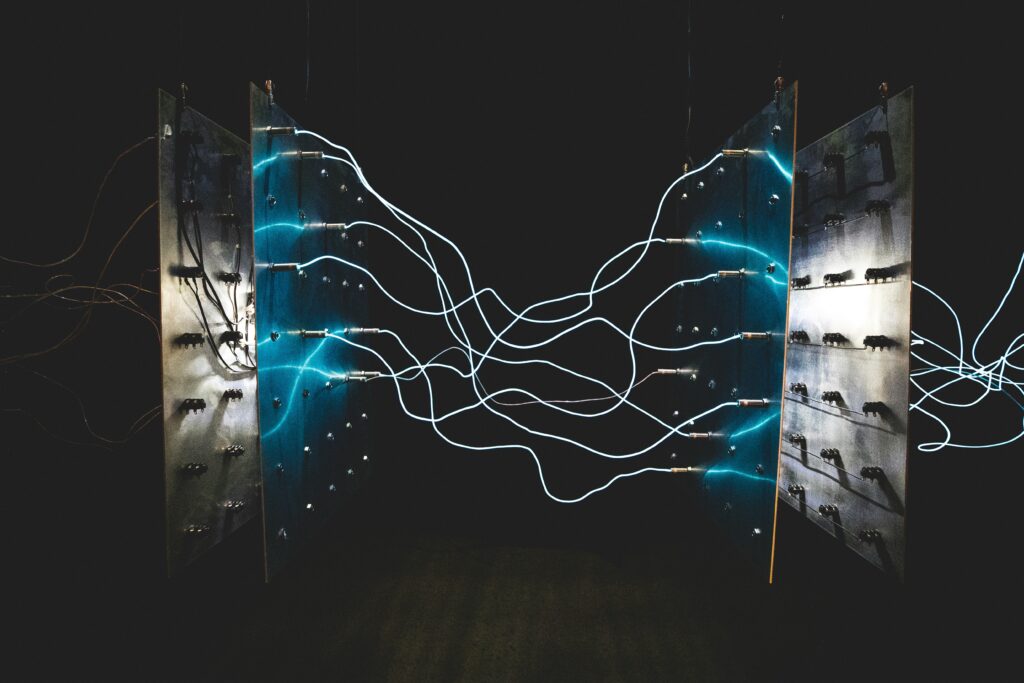Solar energy is becoming a popular alternative to traditional sources of power, and in the ever-evolving world of solar technology, bifacial solar panels have emerged as an exciting innovation. Bifacial solar panels, as the name suggests, are designed to harness energy not only from the front side but also from the back, making them highly efficient. By capturing sunlight from both sides, these panels have the potential to generate more electricity compared to traditional solar panels. In this article, we will explore the fascinating world of bifacial solar panels, their benefits, and their applications in various industries.

Definition of Bifacial Solar Panels
Bifacial solar panels are a type of photovoltaic module that can generate electricity by harvesting sunlight from both the front and back sides of the panel. Unlike traditional solar panels, which only use the front side to capture sunlight, bifacial solar panels have transparent backsheets that allow sunlight to pass through and be absorbed by the solar cells on both sides. This unique design enables these panels to capture high levels of solar energy and increase overall energy yield.
How do Bifacial Solar Panels Work?
The working principle of bifacial solar panels involves the utilization of albedo, the reflection of sunlight off the ground, surfaces, or surrounding objects. When sunlight reaches the front side of a bifacial solar panel, a portion of the light is reflected off the ground or nearby surfaces and reaches the backside of the panel. The backside solar cells then convert this additional reflected light into electricity, maximizing the overall energy generation.

Advantages of Bifacial Solar Panels
There are several advantages to using bifacial solar panels. Firstly, their ability to capture sunlight from both sides significantly increases their power output compared to traditional solar panels. Studies have shown that bifacial solar panels can generate up to 20-30% more electricity than standard panels, depending on the installation conditions.
Another advantage is their flexibility in installation. Bifacial solar panels can be mounted in different orientations, either vertically or horizontally, allowing for more creative and efficient placement. This flexibility also makes them suitable for various applications, including ground-mounted solar power plants, roof-top installations, floating solar farms, and solar carports.
Additionally, the longer lifespan of bifacial solar panels compared to traditional ones can lead to greater savings over time. As bifacial panels are less prone to degradation caused by high temperatures, they offer improved durability and reliability, resulting in reduced maintenance and replacement costs.
Challenges and Limitations of Bifacial Solar Panels
While bifacial solar panels offer numerous benefits, there are also some challenges and limitations to consider. One significant challenge is accurately predicting their performance, especially in terms of energy yield. The amount of sunlight reaching the backside of the panel can vary based on factors such as the ground surface, installation height, and surrounding objects. Therefore, precise modeling and analysis are essential to optimize the installation and accurately estimate the panels’ performance.
Another limitation is the higher upfront cost of bifacial solar panels compared to traditional ones. The use of transparent backsheets, specialized mounting systems, and additional modeling tools can increase the initial investment. However, it is important to note that the potential increase in energy yield and longer lifespan of bifacial panels can offset these initial costs in the long run.
Furthermore, the performance of bifacial panels can be influenced by specific installation conditions. For example, in locations where the ground surface is highly reflective, such as snow-covered areas or near water bodies, the reflected light can enhance energy generation. However, in dusty or soiled environments, both the front and backside of the panels may experience reduced efficiency due to reduced sunlight penetration and increased shading.

Design and Construction of Bifacial Solar Panels
Front Side
Bifacial solar panels have a front side similar to traditional solar panels. It consists of multiple layers, including an anti-reflective coating, a top glass cover, and solar cells. The anti-reflective coating helps to minimize light reflection and maximize light absorption, ensuring more efficient energy conversion. The top glass cover protects the underlying components from external factors such as weather and physical damage.
Back Side
The back side of bifacial solar panels is designed to allow sunlight to pass through and reach the solar cells on the back. It typically consists of a transparent backsheet, which enables the transmission of light. The backsheet also acts as a protective layer for the cells on the backside, shielding them from external factors.
Opaque or Non-Opaque Backsheet
Bifacial solar panels can have different types of backsheets, depending on the desired level of rear-side transparency. Opaque backsheets are commonly used when the installation site does not have significant albedo or reflectivity. In contrast, non-opaque or partially transparent backsheets are preferred for locations where there is a higher potential for reflected light to reach the backside and enhance energy generation.
Materials and Technologies Used
The materials and technologies used in the construction of bifacial solar panels play a crucial role in their efficiency and performance. High-quality solar cells with excellent conversion efficiency are essential for maximizing energy generation. Additionally, the transparent backsheets must be durable, resistant to weather conditions, and have minimal degradation over time.
Various mounting systems are available, allowing for different orientations and configurations to optimize solar panel installations. Advanced modeling tools and simulation software also aid in predicting performance and optimizing the design.
Efficiency and Performance of Bifacial Solar Panels
Factors Influencing Bifacial Solar Panel Performance
Several factors influence the performance of bifacial solar panels. The albedo or reflectivity of the surrounding environment significantly impacts the amount of sunlight reaching the backside of the panels. Highly reflective surfaces, such as snow, white rooftops, or surfaces near water bodies, can enhance the energy yield.
The tilt angle and azimuth of the panels, along with the installation height, affect the amount of reflected light reaching the backside. Proper positioning and orientation can optimize energy generation.
Comparisons to Traditional Solar Panels
When comparing bifacial solar panels to traditional solar panels, the increased energy yield is a significant advantage. The ability to generate electricity from both sides increases overall efficiency and provides a higher output per unit area. However, the increased costs of bifacial panels must be considered when assessing the economic benefits.
Actual Energy Yield and Performance Reports
Several studies and reports have demonstrated the superior performance of bifacial solar panels. For example, a study conducted in Saudi Arabia showed that bifacial panels produced 24.5% more electricity compared to monofacial panels under the same conditions. Real-world applications have also reported significant energy yield improvements, validating the potential of bifacial solar panels.
Applications and Use Cases of Bifacial Solar Panels
Ground-Mounted Solar Power Plants
Bifacial solar panels are increasingly being utilized in ground-mounted solar power plants. The large-scale installations allow for maximum exposure to sunlight and potential reflection from the ground. The increased energy generation of bifacial panels contributes to improved plant efficiency and higher power output.
Roof-Top Installations
Roof-top installations of bifacial solar panels offer several advantages. The additional energy generation from the back side can be beneficial when the rooftop is reflective, such as with white roofs or surfaces. Moreover, the flexibility in module orientation allows for better utilization of available roof space.
Floating Solar Farms
Bifacial solar panels are suitable for use in floating solar farms, where efficiency is crucial due to limited space availability. The reflected sunlight from the water surface enhances the energy yield, making bifacial panels an ideal choice for this application. Their durability and resistance to water damage make them well-suited for floating installations.
Solar Carports and Canopies
Solar carports and canopies can benefit from bifacial solar panels, as they can generate energy from sunlight above the vehicles as well. The additional energy harvest from the reflected light can offset power demands or even provide surplus electricity. Furthermore, the aesthetic appeal of bifacial panels enhances the overall design of these structures.
Installation and Maintenance Considerations
Orientation and Tilt Angle
Optimal orientation and tilt angle play a crucial role in maximizing the performance of bifacial solar panels. The inclination should be set to maximize the amount of sunlight reaching the back side, taking into account local conditions such as latitude and shading. A proper configuration ensures a balance between front and backside energy generation.
Reflection and Soiling Effects
Reflection and soiling effects can impact the performance of bifacial solar panels. Highly reflective surfaces enhance energy generation, while soiling or dust accumulation on either side of the panel can decrease efficiency. Regular cleaning and maintenance are necessary to minimize the negative effects and maintain optimal performance.
Installation Techniques
Different installation techniques can be employed depending on the specific application and mounting system used. Ground-mounted installations require secure foundations and optimal positioning to maximize energy generation. Roof-top installations may require additional considerations for structural integrity and integration with the overall building design.
Maintenance and Cleaning
Proper maintenance and cleaning are essential for maximizing the efficiency and lifespan of bifacial solar panels. Regular inspections to ensure the integrity of the panels, connections, and mounting systems are crucial. Cleaning, either manual or automated, should be performed periodically to remove dust, dirt, or debris accumulation that can hinder the panels’ performance.
Cost and Economic Considerations
Initial Cost and Payback Period
Bifacial solar panels generally have a higher initial cost compared to traditional solar panels. The additional expenses stem from specialized components, such as transparent backsheets, mounting systems, and advanced modeling tools. However, the potential increase in energy generation and longer lifespan can lead to a shorter payback period, making them economically viable in the long run.
Return on Investment (ROI)
The return on investment (ROI) of bifacial solar panels is influenced by various factors, including the initial cost, energy yield, and maintenance expenses. Calculating the ROI involves considering the financial incentives available, the local energy prices, and the timeframe for recouping the initial investment. Proper financial analysis should be conducted to assess the economic viability of bifacial panels for specific projects.
Financial Incentives and Government Support
Many countries and regions offer financial incentives and government support for solar energy projects, including bifacial solar panel installations. These incentives can include tax credits, grants, Feed-in Tariffs (FITs), and net metering schemes. Taking advantage of these incentives can significantly improve the overall economics of deploying bifacial solar panels.
Environmental Impact of Bifacial Solar Panels
Reduced Carbon Footprint
Bifacial solar panels contribute to reducing the carbon footprint by generating clean and renewable energy. As they produce more electricity per unit area compared to traditional panels, fewer panels are needed to achieve the same energy output, leading to a lower environmental impact.
Land Use and Ecological Impact
The reduced space requirements of bifacial solar panels result in lower land use intensity. By generating more energy without increasing the land footprint significantly, they help preserve natural habitats and reduce ecological impact. This advantage makes them suitable for urban areas or locations with limited available space.
Solar Panel Recycling
Recycling is an important consideration in the lifecycle of solar panels, including bifacial ones. Currently, recycling techniques for bifacial panels are similar to those for traditional panels. Proper handling and recycling of the materials ensure that the end-of-life panels do not contribute to landfill waste and can be repurposed for new solar applications.
Market Trends and Future Outlook
Growing Market Demand
The market demand for bifacial solar panels is growing rapidly due to their proven performance advantages. As the cost of production decreases and technological advancements continue, bifacial panels are becoming more accessible to a wider range of consumers and businesses. Increasing environmental awareness and the global shift towards renewable energy are driving the demand for bifacial solar panels.
Technological Advancements
Continuous research and development are leading to technological advancements in bifacial solar panel designs and materials. Researchers are exploring new cell technologies, transparent conductive materials, and advanced modeling tools to further optimize energy generation and increase overall efficiency.
Future Potential and Projections
The future potential of bifacial solar panels is promising. Projections indicate that bifacial panels could account for a significant portion of the global solar market in the coming years. As they become more cost-effective and efficient, their adoption is expected to increase across various applications, including utility-scale solar power plants, commercial buildings, and residential installations.
In conclusion, bifacial solar panels offer significant advantages in terms of increased energy generation, flexibility in installation, and longer lifespan. While challenges such as performance prediction, initial cost, and site-specific considerations exist, the benefits outweigh the limitations. As the market demand grows and technological advancements continue, bifacial solar panels have a bright future, contributing to the global transition towards sustainable and renewable energy sources.




